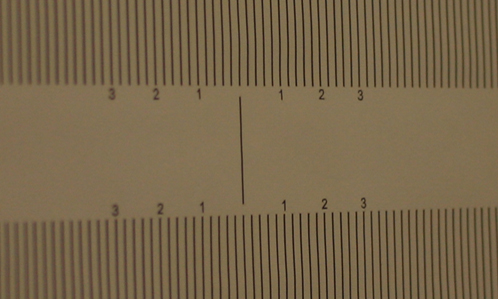|
|
|
2005 | 2004 | favorites | about | links | upcoming shows | contact
lens |
f/2.8 | f/3.5 | f/4.5 | f/5.6 |
tamron 28-75 f/2.8 |
1/1000 | 1/640 | 1/400 | 1/250 |
canon 24-70 f/2.8L |
1/1000 | 1/640 | 1/400 | 1/250 |
sigma 70-200 f/2.8 |
1/1000 | 1/800 | 1/400 | 1/320 |
canon 28-135 f/3.5-5.6 IS |
| | 1/400 | 1/250 |
lens |
f/2.8 | f/4.0 | ||
| jpg | raw | jpg | raw | |
tamron 28-75 f/2.8 |
1/45 | 1/45 | 1/20 | 1/20 |
canon 24-70 f/2.8L |
1/45 | 1/45 | 1/20 | 1/20 |
sigma 70-200 f/2.8 |
1/45 | 1/45 | 1/20 | 1/20 |
lens |
original | crop |
tamron 28-75 f/2.8 |
original | crop |
canon 24-70 f/2.8L |
original | crop |
lens |
28mm auto focus | 28mm re-focus | 70mm auto focus | 70mm re-focus |
tamron 28-75 f/2.8 |
result | result | result | result |
canon 24-70 f/2.8L |
result | result | result | result |
canon 28-135 f/3.5-5.6 IS |
result | result | result | result |
sigma 70-200 f/2.8 |
result auto focus @ 125mm |
result re-focus @ 125mm |
||
>
lens |
f/2.0 | f/2.8 | f/4.0 | f/5.6 | f/6.7 |
tamron 28-75 f/2.8 |
| 1/1000 | 1/500 | 1/250 | 1/125 |
canon 24-70 f/2.8L |
| 1/1000 | 1/500 | 1/250 | 1/125 |
sigma 24-70 f/2.8 |
| 1/750 | 1/350 | 1/180 | 1/90 |
canon 28-135 f/3.5-5.6 IS |
| | 1/180 (f/4.5) |
1/180 | 1/90 |
sigma 70-200 f/2.8 |
| 1/750 | 1/350 | 1/180 | 1/90 |
canon 75-300 f/4-5.6 IS * |
| | 1/350 | 1/180 | 1/90 |
canon 35 f/2.0 * |
1/2000 | 1/1000 | 1/500 | 1/250 | 1/125 |
lens |
f/2.0 | f/2.8 | f/4.0 | f/5.6 | f/6.7 |
tamron 28-75 f/2.8 |
| 1/500 | 1/250 | 1/125 | |
canon 24-70 f/2.8L |
| 1/500 | 1/250 | 1/125 | |
sigma 24-70 f/2.8 |
| 1/500 | 1/250 | 1/125 | |
canon 28-135 f/3.5-5.6 IS |
| | 1/125 (f/4.5) |
1/90 | |
sigma 70-200 f/2.8 |
| 1/250 | 1/250 | 1/125 | |
canon 75-300 f/4-5.6 IS * |
| | 1/250 | 1/125 | |
canon 35 f/2.0 * |
1/1000 | 1/500 | 1/250 | 1/125 | |




